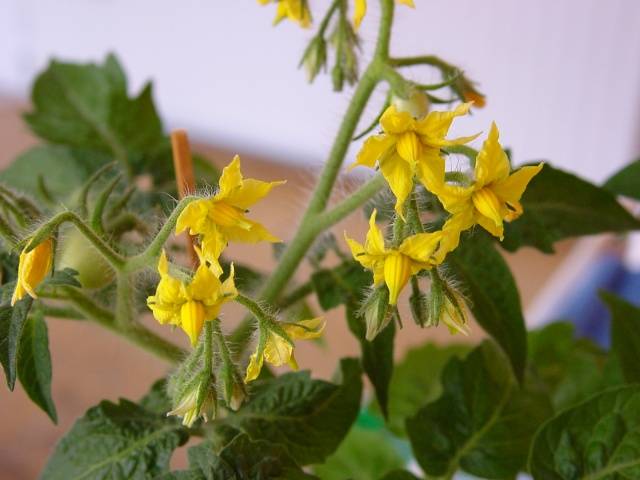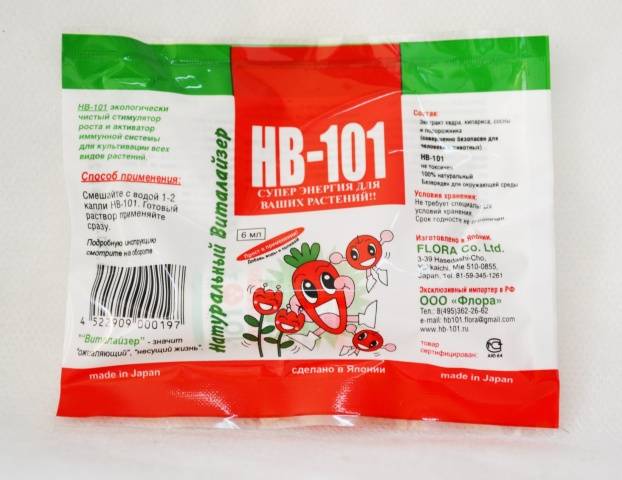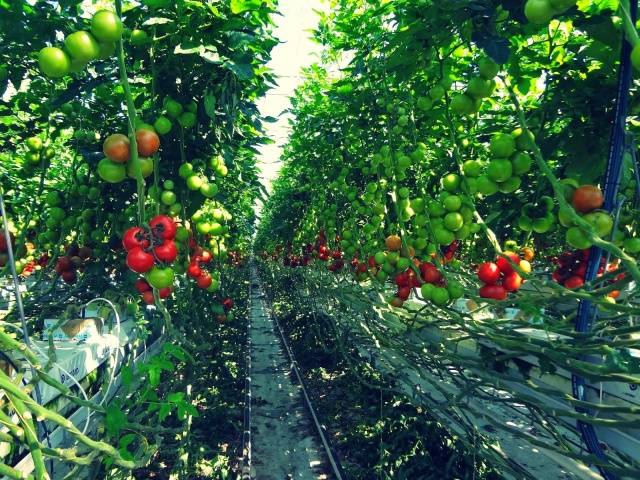Content
Even healthy and strong tomato seedlings may not produce enough ovaries. The reason for this usually lies in the lack of necessary conditions for the growth of tomatoes. Spraying tomatoes with special substances and preparations helps solve the problem. As a result, the growth of seedlings and the formation of ovaries improves.
Reasons for the absence of ovary
Tomatoes need to provide a number of conditions for the ovary to appear. If the required microclimate in the greenhouse is disrupted, the tomato yield will decrease significantly.
Temperature
Tomatoes need to maintain a certain temperature in the greenhouse. When temperatures are too high or low, plant flowers may drop.
Pollination of tomatoes occurs under the following conditions:
- 13-21°C at night;
- up to 28°C during the day.
If the air temperature exceeds 40°C, this will cause the flowers to fall off. An increase in night temperatures by several degrees will have a detrimental effect on the appearance of the ovary. At night, tomatoes need rest, which cannot be provided at high ambient temperatures.
To maintain the temperature balance of tomatoes, greenhouses are regularly ventilated. To increase the temperature, additional covering material is used. Watering in the morning will help reduce it, which also promotes the appearance of the ovary.
Before frosts, you should take care in advance of heating the greenhouse and the tomatoes that grow in it. For this purpose, special ovens or electric heaters are used. Another option would be to use daytime heat accumulators - containers filled with warm water.
Humidity
Humidity indicators are more difficult to achieve, but this is a completely doable task. To obtain ovaries, the humidity ranges from 40 to 70%.
If the humidity in the greenhouse is low, then you need to spray the tomatoes in the morning. Additionally, the passages are moistened with a hose. If there is a lack of moisture, the tomato ovaries crumble, leaves curl, the tops droop.
This figure can be reduced by mulching the soil. Another method is local watering of tomatoes.
Top dressing
The formation of the ovary directly depends on the supply of nutrients to the tomatoes. Of particular importance for the formation of the ovary is nitrogen, which is involved in the development and appearance of buds. The first fertilizing is done after planting tomatoes in the ground.
If the tomatoes are healthy, then it is possible to feed them a few weeks after transferring them to the greenhouse. Excess nitrogen also has a negative effect on tomatoes.
One plant requires up to 30 g of nitrogen fertilizer. Excessive feeding will lead to active growth of the stem and foliage, and not the development of ovaries.
Pollination
Ovary formation is impossible in the absence of pollination. If tomatoes grow outdoors, this process occurs naturally. Pollen is transported by wind.
In greenhouses, artificial conditions for pollination are created. Shaking the tomatoes will help transfer the pollen. If the tomatoes are tied, then just tap on the ropes.
Another method is to use a fan. Artificially created air currents promote the movement of pollen and the formation of the ovary.
Other factors
Other factors may also cause the absence of ovaries:
- lack of sunlight;
- deficiency of microelements (phosphorus or potassium);
- lack of life-giving forces in the plant (applies to large-fruited varieties);
- diseases that prevent tomatoes from forming ovaries;
- treatment with chemicals that reduce pollination productivity.
In order for tomatoes to develop correctly and form the ovary, they need to be provided with timely watering and fertilizing. Tomatoes are regularly processed to prevent diseases. Disinfectants based on iodine, boric acid, salt.
Rules for spraying tomatoes
In order for spraying tomatoes to be beneficial and for them to receive the maximum of nutrients, you must follow the rules for this procedure.
Spraying the ovary is carried out subject to a number of conditions:
- lack of heat;
- calm weather without precipitation (if the tomatoes are planted in open ground);
- morning or evening is chosen, when the activity of the sun's rays decreases;
- the liquid should only fall on the flowers and brushes of plants;
- the ovary agent should not get on the shoots and top of the tomatoes;
- processing tomatoes only with a fine spray.
Warm water is used to spray the ovaries of tomatoes. If the source for irrigation is a well or spring, then first fill the containers with water. After settling and heating, the water becomes suitable for spraying tomatoes.
Preparations for the ovary
Spraying with special solutions helps increase the number of ovaries. Some can be made at home from ingredients available at pharmacies or gardening stores. There are special preparations aimed at improving the ovary of tomatoes.
Boric acid
For tomatoes, a universal fertilizer is boric acid. It is applied to the soil to eliminate late blight. Additionally, the transportation of sugar is improved, which has a positive effect on the taste of tomatoes and the development of new ovaries. By using boron It’s easier for tomatoes to obtain and synthesize useful elements from the soil.
With proper use of boron, the first harvest of tomatoes is harvested at the end of June. The first spraying of the ovary is carried out before flowering, when the buds begin to form. This feeding will speed up their growth and stimulate the formation of new inflorescences.
The next spraying is carried out at mass blooming tomatoes. Processing tomatoes during this period allows new ovaries to form and prevent them from falling off.
For spraying, use 1 liter of solution for every 10 m2 beds. To obtain new tomato ovaries, you need to dilute 10 g of boric acid in 10 liters of water. This amount is enough to fully process tomato leaves.
Ovarian stimulants
Thanks to special stimulants, you can increase the number of ovaries and get a good harvest. Their composition includes natural substances (salts, acids, microelements) that activate metabolism in tomatoes. As a result, much more fruit is produced, even under unfavorable conditions.
Preparations for the ovary are available in the form of tablets, powder or liquid. To spray the tomato ovary, the drug is dissolved in hot water. The product is diluted in a container that is not subject to oxidation. To mix, you will need a wooden stick.
With proper use of stimulants, the number of ovaries increases, the development of tomatoes and fruit formation are accelerated. As a result, there is a 25% increase in yield.
The concentration of the drug is selected taking into account the purpose of its use. If there are no deviations in the development of tomato ovaries, then 2 g of powder per 1.5 liters of water is sufficient. Treatment is carried out during the period of ovary emergence and before flowering.
If you want to increase the yield of tomatoes, then 2 g of the stimulant is dissolved in 1 liter of water. More precise concentrations are indicated in the instructions for the drugs, so discrepancies are possible here.
The following types of stimulants are most effective:
- "Ovary";
- "Tomaton";
- "Phytocarpin";
- Boro Plus.
Vitalizers
Towards natural growth stimulants include vitalizers whose composition includes silicon dioxide. With its help, cell formation and development of tomato ovaries are accelerated.
Vitalizers are obtained from the sap of trees and herbs (plantain, cypress, pine, cedar). These plants are distinguished by a long life span and a unique composition of proteins and minerals.
The fertilizer is supplied in liquid or granular form. After its use, the number of tomato ovaries increases, the time of fruit ripening is reduced, and their quality improves.
The vitalizer is diluted with water, after which the product is ready for spraying. The drug is also used when the ovary falls off.
Tomato processing performed with vitalizer HB 101. This product is used for tomato seed treatment, watering, fertilizing the soil before planting. For the ovary, tomatoes are sprayed with the preparation weekly.
Gibberellic acid
Gibberellin is a hormone that increases the yield of tomatoes. It is available in powder or liquid form. The drug is included in the tomato treatment scheme, as it stimulates seed germination, seedling growth and the appearance of ovaries.
Additional properties of gibberellin are:
- increasing the number of ovaries and yield;
- obtaining large fruits with a high sugar content;
- acceleration of the flowering process and enlargement of flowers.
Gibberellin is a safe substance, but when using it, protective measures should not be neglected.
Gibberellin is first diluted in alcohol. For 1 g of substance, 100 ml of alcohol is required.The resulting solution can be stored and used for ovaries for six months.
The concentrate is then diluted with water. For tomatoes, a solution with a concentration of up to 50 mg/l is required. To obtain 30 ml of alcohol solution, 6 liters of water are required. Spraying tomato flowers increases the yield and the number of future ovaries.
Feeding with potassium and phosphorus
Tomatoes need potassium during the development of the ovary, when the third and fourth leaves appear. Additionally, potassium improves the taste of tomatoes and increases their resistance to diseases.
Due to phosphorus, plant resistance to unfavorable factors increases, the root system develops and tomato fruit sets faster.
Feeding is carried out in early July, then once a month. It is best to use a fertilizer complex.
other methods
Compliance with the rules for planting and caring for tomatoes allows the plants to form an ovary, and gardeners to get a good harvest.
Soil preparation
Tomatoes prefer soil that contains humus and compost in equal proportions. Additionally, the soil is enriched with potassium sulfate and superphosphate. The soil for tomatoes should remain loose and warm up well.
The first soil preparation is carried out in the fall. The soil is dug up to a depth of 20 cm. Before planting in the spring, the procedure is repeated.
Preliminary soil for tomatoes are disinfected with iodine solution or other substances. This way you can avoid the development of tomato diseases that lead to the fall of the ovary.
Loosening the soil is another factor that increases the yield of tomatoes.As a result, soil aeration, moisture penetration and nutrient absorption are improved.
To strengthen the root system, tomatoes are hilled. Thus, additional roots are created, improving the supply of moisture and minerals for the formation of tomato ovaries.
Planting scheme
Tomatoes in the greenhouse should be planted in a certain direction: from east to west. Thus, all seedlings will receive uniform lighting, and in the afternoon there will be no darkening from neighboring plants. As a result, daylight hours for tomatoes increase and the number of ovaries increases.
Up to 0.7 m is left between seedlings. If two rows are equipped, then up to 0.8 m is left between them. Tomatoes can be placed in a checkerboard pattern or along one line.
Another option is combined planting. Low-growing varieties are planted near the walls of the greenhouse, leaving 0.4 m between them. Tall tomatoes, which ripen at a later date, are placed next to the aisle. Thus, plant pollination and ovary development are ensured.
Mulching
Mulching allows you to enrich the soil in the heifer. The surface of the soil is covered with a layer of compost, straw, mown grass or sawdust. This method makes it possible to avoid germination weed.
An additional effect is the preservation of soil moisture and the absence of crust on the soil surface. Mulch promotes the development of beneficial microorganisms that turn the top layer of soil into fertile soil for tomatoes.
Mulching the soil is done immediately after planting tomatoes. If a constant temperature has not yet been established, it is better to postpone the procedure.Otherwise, in case of frost, the tomatoes will freeze, which will negatively affect the formation of the ovary.
Stepsoning
Eliminating excess shoots allows tomatoes to direct all their energy to the development of the ovary. Flowers and fruits may appear on the abandoned shoots, but they will not have time to form.
Excess tomato shoots can be removed already at the seedling stage. After planting in the ground, intensive formation of shoots begins.
The shoots are removed every week. This is done before their length exceeds 2.5 cm. Otherwise, there is a risk of injuring the tomato. Then the tomatoes will direct their vitality to the formation of the ovary.
Conclusion
The appearance of tomato ovaries is influenced by the microclimate in the greenhouse, the presence of fertilizers, and the supply of moisture. To increase productivity, special preparations are used that are harmless to humans and the environment. Tomato processing is carried out in compliance with a number of rules. Each drug is used strictly according to the instructions. After spraying tomatoes, new ovaries appear, which leads to an increase in the final yield. With proper care and an influx of nutrients, the growth of tomatoes and their fruiting are ensured.

























THANK YOU FOR THE GOOD ADVICE! GOOD LUCK TO YOU!